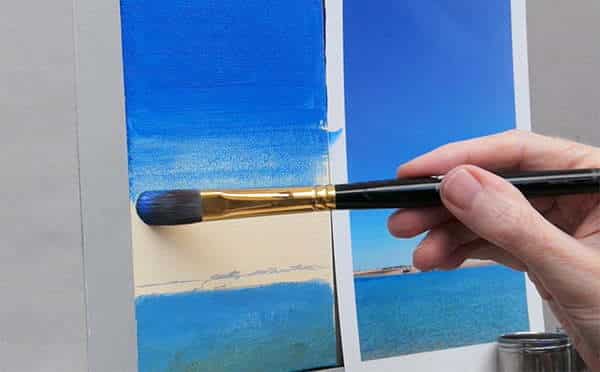
A Comparison Video
Morning class,
Over the past few months, I’ve been experimenting with various mediums, recording drying times and noting the handling of water-mixable oils – all in the process of creating a new course.
Amongst the copious footage, I wanted to share this introductory lesson where I compare the dilution of acrylics to water-mixable oils.
Simple but fundamental observations.
You may find there are times when acrylics dry off too quickly or are difficult to blend especially when you’re painting in thin layers. Using water-mixable oils can be fantastic because they give you that extra working time. Painting wet-into-wet is one of the significant advantages you’ll notice because you gain a lot more time for smoking together colours.
But how do they both compare when diluting with water?
So in this video, I paint a graduated sky, blending really thin applications using water, then a medium.
Downloading the reference photograph

The photo above can be ‘clicked’ and ‘Save image as’, so you can use it as a reference image, print it out and follow along with the video.
Materials you will need:
Brushes
- Filbert – Rosemary & Co – Shiraz Size 8
Support
- Canvas Board 18 x 13 cm (7 x 5 inch)
I demonstrate on cotton canvas board but you could also use a canvas.
Palette Knife
- RGM Classic Line, Medium size 45, Diamond-shaped, cranked (angled) handle. I use an RGM 45 for mixing the paint.
Drawing
- Montana Acrylic Paint Maker (Iron Curtain 0.7mm)
Other Materials
- Gesso (Golden)
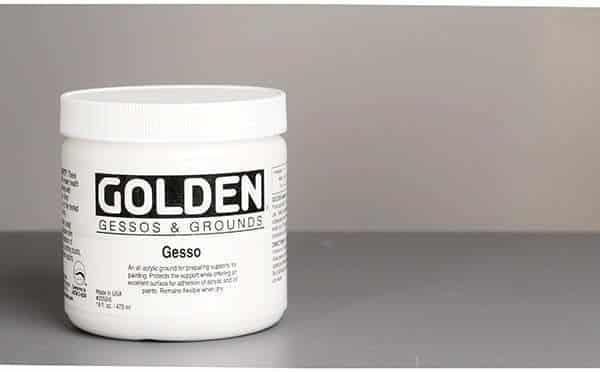
Watery layers are best used onto an absorbent ground, so the paint ‘grabs on’. The more water you use the quicker the paint dries and it dries very matte. Because of the inclusion of water, you’ll find the pigments tend to temporarily lighten in colour and then dry matte as the water evaporates.
- Kitchen roll/paper towel
- Clean water
- Metal double dipper (you could use two small pots)
- Tear-off palette or stay-wet palette (In this tutorial I demonstrate on an A3 size Grey Pad from New Wave tear-off palette)
Acrylic Paints – The Colour Palette
I’ve used a mix of Golden Heavy Body colours & Winsor & Newton Professional Acrylic (also called Artists’ Acrylic)
- Titanium White (Golden)
- Yellow Ochre (Golden)
- Phthalo Blue – Red Shade (Golden)
- Hansa Yellow Light (Golden)
- Raw Sienna (Winsor & Newton)
- Ultramarine Blue (Golden)
- Cobalt Blue Hue (Golden)
Water-Mixable Oil Paints – The Colour Palette
I’ve used a mix of Cobra Artist’s Water-Mixable Oils & Holbein Duo Aqua Water-Mixable Oils
- Titanium White (Cobra)
- Yellow Ochre (Cobra)
- Ultramarine Blue (Cobra)
- Cobalt Blue Hue (Duo Aqua)
Acrylic Mediums
- Airbrush Medium (Golden Paints)
Pro tip: I use a mix of airbrush medium and water when applying the gesso in this video. Some canvas boards can resist and repel water more easily so this can help with adhesion. If your board is particularly water repellent and you haven’t got airbrush medium a drop of acrylic flow release would also work. If you’re using canvas you’ll be absolutely fine diluting just with water.
- Acrylic Glazing Liquid Gloss (Golden Paints)
Water-Mixable Mediums
- Artisan Low Odour Thinner (Winsor & Newton)
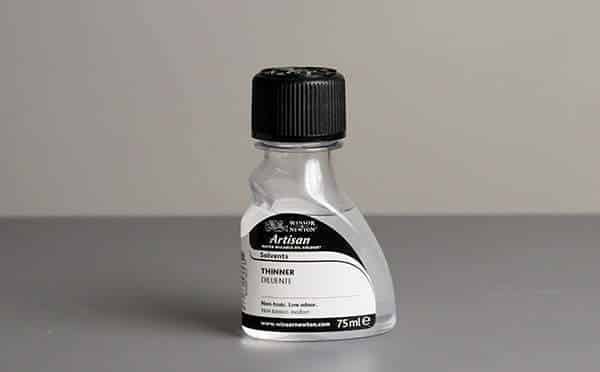
A whole range of water-mixable mediums are available to achieve a good flow and desired consistency but I’m going to use water-mixable low solvent thinner. This will dilute the paint and extend the drying time in comparison to water.
Have a great week and you can learn about the beginners guide to water-mixable oils here
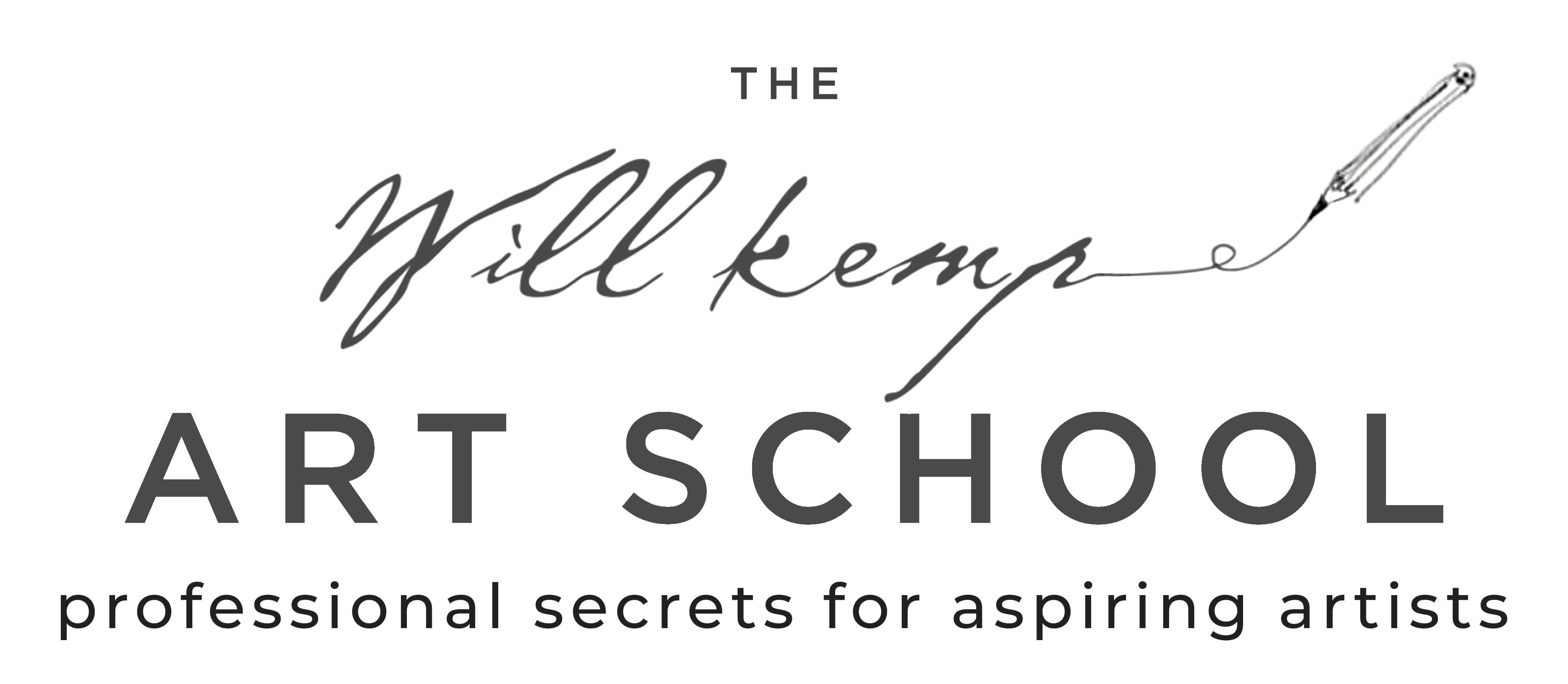
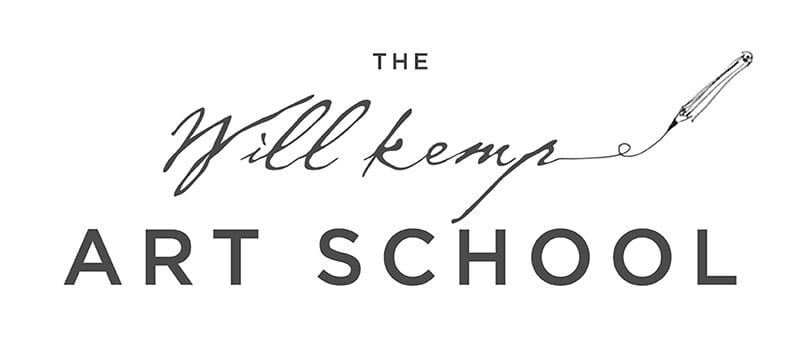
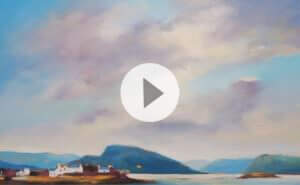
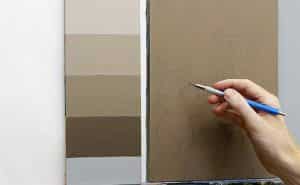

Thank you!
You’re welcome Gail
Will
Thanks for the water mixable oil demo, Will. I just started using the water mixables and love them, but I didn’t know about the mediums available.
Pleased it was helpful Janet
Will
Thank you, Will, for this helpful insight.
Acrylic glazing mediums are semi-opaque white while in suspension. That’s problematic because 1) the white emulsion *tints* the glaze color and 2) obscures the relationship between the underlying color and the glaze. Of course, the glazing medium dries clear, but if the effect is not what I intended, it’s too late. I’m stuck with the result.
Per your informative demonstration, I’m wondering if the *clear* Golden Airbrush Medium might be used as a glazing medium, or perhaps added to water being used to thin acrylic glazes.
If you know of any *clear* medium suitable for acrylic glazing techniques, please advise.
Thanks as always for sharing your expertise,
Tom
Hi Tom,
I’m wondering if the *clear* Golden Airbrush Medium might be used as a glazing medium, or perhaps added to water being used to thin acrylic glazes.
If you where working on the flat in thin layers you could you the airbrush medium but it lacks the viscosity of the glazing medium when working at an easel.
Cheers,
Will
Will, I’m a longtime watercolor artist, and recently trying the Water mixable oils. Really liking it and trying to learn all I can about them. I use water only to clean my brushes, thinner to block in big shapes, then wmo medium to finish painting.
Thanks so much for any help.
Glad you’ve been enjoying them Barbra
Will
Thanks Will. Can hardly wait for your course!
Cheers Leslie, pleased you’re looking forward to it
Will
Hi Will,
Thanks for this nice demo, and for all the demos and courses that you have done.
I like acrylics because of the fast drying time. If I wanted to blend a large area on a warm day wouldn’t I use a little retarder or maybe some glazing medium?
I’ve used water mixable oils and since I still needed oil and/or soap and water to properly clean my brushes and they make mediums especially for these paints I’ve had trouble understanding what their advantages are over regular oils. Sorry if you’ve explained this and I missed it.
Hi Jeff,
If I wanted to blend a large area on a warm day wouldn’t I use a little retarder or maybe some glazing medium?
Yes, that would increase the working time.
I’ve had trouble understanding what their advantages are over regular oils
Main difference is the ability to clean with water and soap without using strong solvents, so it’s really for people who are sensitive to turpentine, or work in an enclosed working space and want to lessen their exposure to thinners.
Will
Thanks so much for the demo. This was really thoughtful and has me rethinking the use of H20 mixable oils as I had tried them but didn’t like how they moved on canvas with water. Now, I’ll get several of the mediums to try out while waiting for your new course; will also try airbrush medium w/ acrylics. So truly happy that the video is will be coming out SOON. Very curious to see all three demos side-by-side in the video when you release it. Cheers!
Pleased it was helpful Vicky.
Will
Hello Will. This is the first time I’ve ever seen air brush medium added to a gesso layer – can you elaborate the purpose?
Many thanks and looking forward to the WMO course.
Hi Helle, for the gesso layer you could just use water, the airbrush medium helps to retain paint film integrity and on some surfaces like canvas boards they can often not grab the water layers as well as cotton canvas.
Cheers,
Will
Thank you.
Cheers Virginia
Thanks again for an insightful lesson
My pleasure Lennie.
Will
Thank you very much Will.
I have been contemplating using oils or water soluble however
I think I will stay with the
acrylic. Keep well.
Thanks Joanne
Hi Will, thanks for taking the time to put together a very instructive and useful video. I’ve been checking back to see if your new water mixable oil course is available yet. I can’t wait to try it out whenever you release it. I love painting with acrylics but sometimes it dries too fast so I bought a set of Cobra water mixable oils which I like. I used water for the thinner layers and didn’t know about the various mediums. I can’t wait for your new water mixable oil tutorial to learn more.
That’s great to hear Karen, so pleased you’re looking forward to it!
Will
Interesting! I have very limited knowledge of what to do with the different mediums available to artists, so I appreciate the information. I’ve been playing around regularly this years with the acrylics and water soluble oils together. I guess I enjoy the process of experimenting on my own, but then there’s your website that I keep circling back to because it’s spot on to some of my challenges. Question: can you shed light on why you prefer using Cobra and Holbein water soluble oils? And how are they different from each other? Thanks!
Hi Laura, pleased you found it helpful. Cobra have a nice flow from the tube and Holbein are a stiffer consistency and good opacity and wide range of colours. Cobra have two versions the artist and the study, the artist have a better pigment load.
Hope this helps,
Will
Hi Will,
I’m back after doing a little bit of research trying to find the Rosemary & Co Filbert paint brush you’re using. It looks like exactly what I want, but can’t find it in the US. There are soooooo many different filberts to choose from. Any chance you have another suggestion that we can get over here? … or perhaps a company that sells that Rosemary & Co brush in the US? … I spent a few hours combing the internet. And thank you for the other info. Appreciate it. -Laura
Hi Laura, I think Wind River Arts stock a good selection of Rosemary & Co in the US
Cheers,
Will
just wondering if you have painted with Gouache and or have any lessons or comments about its artistic use?
Hey Jerry, i haven’t currently got ant Gouache lessons on the site, good to know they would be of interest. They can be really good for doing colour studies when out sketching due to using water as a dilutant.
Cheers,
Will
In reply to Laura. Rosemary and Co. Will ship to Canada so check into it. That’s what I did.
Having experienced your courses and short videos I have come to the conclusion that there is only one word for watching Will Kemp paint.
It’s simply, MESMERISING.
Thank you Will. You are a genius of demonstration. No.1 in my book.
You’re too kind Charles, so pleased you’ve been enjoying the teachings.
Will